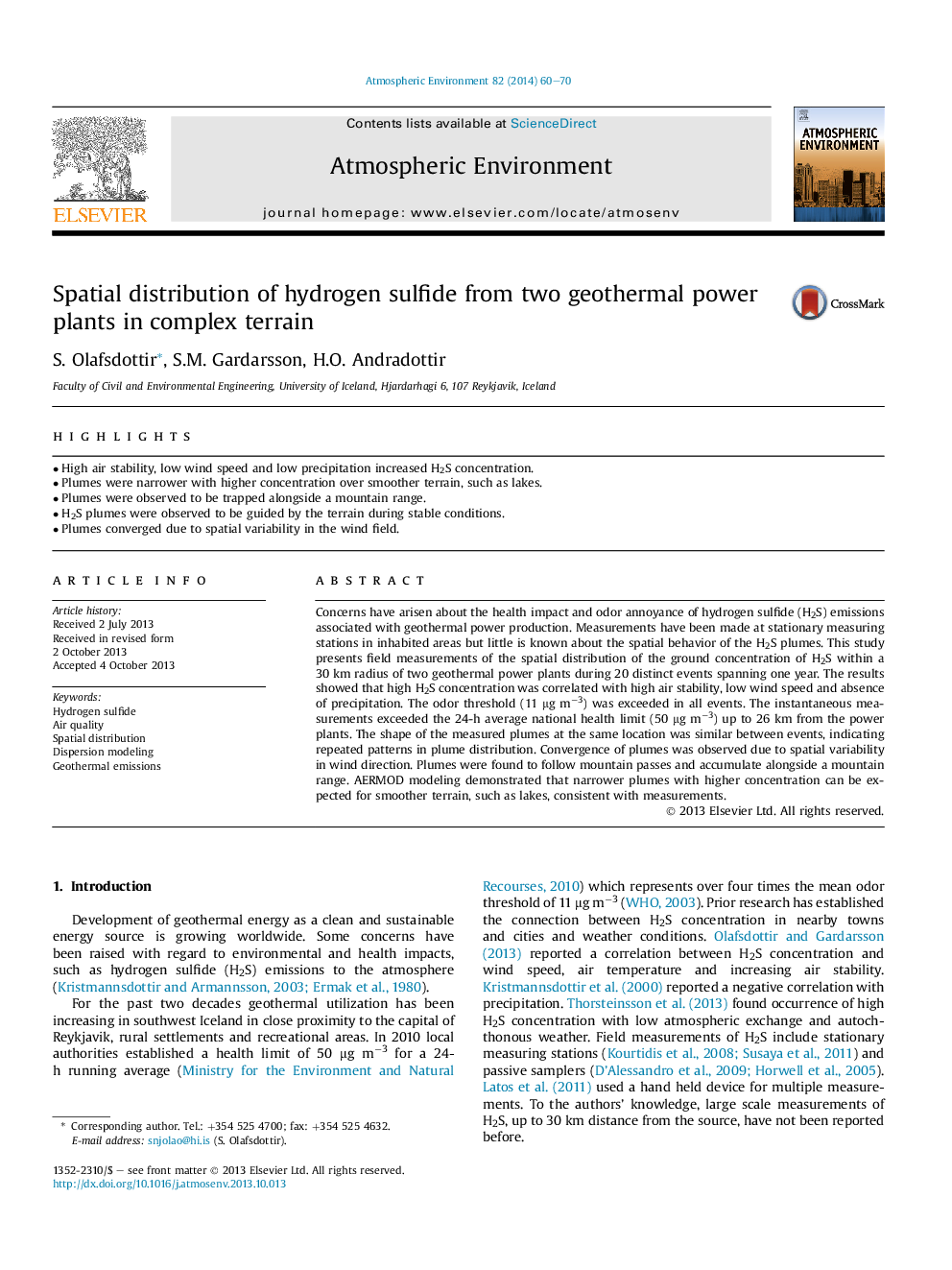| Article ID | Journal | Published Year | Pages | File Type |
|---|---|---|---|---|
| 6340027 | Atmospheric Environment | 2014 | 11 Pages |
Abstract
Concerns have arisen about the health impact and odor annoyance of hydrogen sulfide (H2S) emissions associated with geothermal power production. Measurements have been made at stationary measuring stations in inhabited areas but little is known about the spatial behavior of the H2S plumes. This study presents field measurements of the spatial distribution of the ground concentration of H2S within a 30 km radius of two geothermal power plants during 20 distinct events spanning one year. The results showed that high H2S concentration was correlated with high air stability, low wind speed and absence of precipitation. The odor threshold (11 μg mâ3) was exceeded in all events. The instantaneous measurements exceeded the 24-h average national health limit (50 μg mâ3) up to 26 km from the power plants. The shape of the measured plumes at the same location was similar between events, indicating repeated patterns in plume distribution. Convergence of plumes was observed due to spatial variability in wind direction. Plumes were found to follow mountain passes and accumulate alongside a mountain range. AERMOD modeling demonstrated that narrower plumes with higher concentration can be expected for smoother terrain, such as lakes, consistent with measurements.
Related Topics
Physical Sciences and Engineering
Earth and Planetary Sciences
Atmospheric Science
Authors
S. Olafsdottir, S.M. Gardarsson, H.O. Andradottir,
